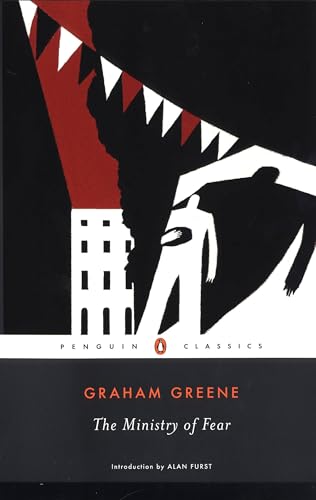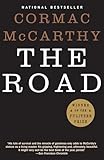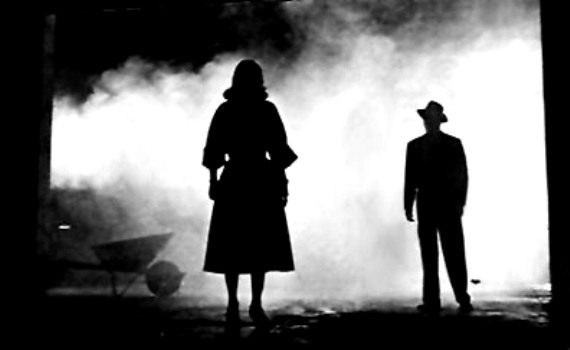 1.
1.
After Hugo Chávez’s death, it certainly didn’t take long for conspiracy theories to surface, or indeed resurface, about a United States plot to poison him. Then came Rand Paul’s epic filibuster, which fired up liberals, libertarians, and conspiracy theorists alike. The South American intrigue and vision of armed drones patrolling American skies almost managed to overshadow the upheaval at the Vatican, always good for a dose of real or imagined intrigue: Shocking Resignation! Papist plots! Female Popes! Borgias! Traitorous butlers! The past month has been particularly rich in conspiracy theories, though as Richard Hofstadter notes in his famous essay “The Paranoid Style in American Politics,” the conspiratorial worldview, “while it comes in waves of different intensity…appears to be ineradicable.”
Explaining humanity’s endemic paranoia, Hofstadter concedes that broadly speaking, conspiratorial thinkers have it right: “All political behavior requires strategy, many strategic acts depend for their effect upon a period of secrecy, and anything that is secret may be described, often with but little exaggeration, as conspiratorial.” The paranoid mind, however, sees conspiracy as “the motive force in historical events” and imagines a vast, shadowy network of unlimited power working around the clock to sabotage, infiltrate, obfuscate and corrupt. This worldview spawns a style that is “nothing if not coherent,” blends a “seemingly coherent application to detail” and “the most fantastic conclusions,” is flexible enough to adopt the voice of a Dryasdust pedant or a lurid visionary, and finally projects its author’s desires and limitations onto a beguiling villain, a “free, active, demonic agent.” Hofstadter’s paranoid, it turns out, possesses many of the elements of a good novelist (save, crucially, irony).

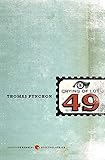 Several years ago — when some of the finest paranoid minds were at work on Barack Obama’s birth certificate — I used this connection between the paranoid and the novelist to design a composition class on conspiracy fiction. I figured the flashy topic would be a good way to smuggle in a short history of Western literature from the Book of Revelations to The Crying of Lot 49. The nineteen enrolled students, many of whom were reasonably expecting to be enlightened about Opus Dei or the suspiciously decorated Denver International Airport, found themselves snared in an elaborate plan designed to make them read Richard III. I still remember their gasps when they realized that the deception went all the way to the top (or rather, all the way to their graduate instructor). By the time the add/drop deadline had passed, we were proceeding line by line through Lucky’s monologue in Waiting for Godot, that two-act conspiratorial joke played on a hapless couple, and there was, to quote Beckett, “nothing to be done.” Unless I could somehow be stopped, my dastardly, 12-week plan would soon culminate in a research paper on a topic of their choice.
Several years ago — when some of the finest paranoid minds were at work on Barack Obama’s birth certificate — I used this connection between the paranoid and the novelist to design a composition class on conspiracy fiction. I figured the flashy topic would be a good way to smuggle in a short history of Western literature from the Book of Revelations to The Crying of Lot 49. The nineteen enrolled students, many of whom were reasonably expecting to be enlightened about Opus Dei or the suspiciously decorated Denver International Airport, found themselves snared in an elaborate plan designed to make them read Richard III. I still remember their gasps when they realized that the deception went all the way to the top (or rather, all the way to their graduate instructor). By the time the add/drop deadline had passed, we were proceeding line by line through Lucky’s monologue in Waiting for Godot, that two-act conspiratorial joke played on a hapless couple, and there was, to quote Beckett, “nothing to be done.” Unless I could somehow be stopped, my dastardly, 12-week plan would soon culminate in a research paper on a topic of their choice.
In one of the odd ways that syllabi mirror life, one day after class I found myself in a strange discussion with a student’s father. He worked in the defense industry and was concerned that his son’s enrollment in a conspiracy fiction class might raise red flags. I assured him that while I was guilty of numerous pedagogical crimes, I had no intention of subverting the government. The course, I explained, was about the importance of “plot” in both fiction and conspiracy theories. We were less concerned with loosening the tentacles of our military industrial complex than in teasing out the literary implications of Hofstadter’s essay on the paranoid style, which argues that the distinguishing feature of a conspiracy theory is not “the absence of verifiable facts,” but rather the “curious leap in imagination…from the undeniable to the unbelievable.” Conspiracy fiction, and here I smugly quoted from my course description, reverses this process, imaginatively leaping from the unbelievable to the undeniable.
Couldn’t he see, I breathlessly continued, that the paranoid’s ability to weave each new piece of information into a growing web of deceit mirrored the novelist’s seamless construction of a fictional world? That the paranoid’s perverse faith in the unremitting power of his antagonist was similar to the reader’s faith in the novelist’s diabolical control over every character, detail, scene and plot twist? (Did I mention that a tendency to longwindedness was one of my aforementioned teaching faults?) For my peroration, I urged him to grant that conspiracy fiction modeled an intensified version of the same “blessed rage for order” that motivates all of our reading, from modern poetry to a lease agreement.
In short, I told him that my course was in no way jeopardizing his security clearance.
2.
 Looking back on that little chat with the military contractor, I believe that episode, and its attendant eeriness, gave me the fanciful notion that my students were in fact conspiring against me. It speaks either to my classroom management skills or to my paranoid disposition that I began to see every note passed, whispered comment, or mute response to my questions as a sinister sign of collusion. Moreover, when they did speak, they seemed intent on asking questions for which I had no answer. I felt like The Third Man’s Holly Martins, the author of Breakfast at Double Egg Ranch who must give an impromptu lecture on the crisis of faith in the modern novel.
Looking back on that little chat with the military contractor, I believe that episode, and its attendant eeriness, gave me the fanciful notion that my students were in fact conspiring against me. It speaks either to my classroom management skills or to my paranoid disposition that I began to see every note passed, whispered comment, or mute response to my questions as a sinister sign of collusion. Moreover, when they did speak, they seemed intent on asking questions for which I had no answer. I felt like The Third Man’s Holly Martins, the author of Breakfast at Double Egg Ranch who must give an impromptu lecture on the crisis of faith in the modern novel.
The often naïve heroes of conspiracy fiction must quickly learn to read the signs of an increasingly sinister world, and read I did. The students’ papers were a source of constant paranoid speculation. I became convinced that after having encountered Poe’s “The Purloined Letter,” a meerschaum-infused tale of royal blackmail, they were employing increasingly cunning ways to conceal their thesis statements — those necessary MacGuffins around which all English papers turn — from my “lynx eye.” Were they perhaps hiding in plain sight like the missing letter, “thrust carelessly and…contemptuously” somewhere in those 2.5-spaced paragraphs?
No sooner had I given up the search then we moved on to Conan Doyle’s “The Red-Headed League,” that marvelous tale in which a conspiracy is set in motion in the most public of ways: a newspaper announcement putting out a call to “all red-headed men who are sound in body and mind.” Suspecting that the students had drawn inspiration from the redheaded man’s mysterious sinecure — copying out the Encyclopedia Britannica for 4 pounds a week — I soon began seeing plagiarists everywhere scheming to dupe their hardly Sherlockian instructor. When we got to Borges’s “Death and the Compass,” I convinced myself that the students were merely crafting their papers to read like plagiaries, thereby mimicking the villainous trick played on Lönnrot, a detective who is lured into a trap through his “reckless perspicacity.”
A switch from literature to Machiavelli’s political science gave me a strategy for heading off the class’s conspiratorial fever.
…in taking hold of a state, he who seizes it should examine all the offenses necessary for him to commit, and do them all at a stroke, so as not to have to renew them every day and, by not renewing them, to secure men and gain them to himself with benefits.
 Acting more the lion than the fox, I didn’t even tuck my shirt into my khakis before bursting into the classroom the following day. I doled out pop quizzes, checked their books for marginalia, confiscated their phones and forced them to spend the remaining twenty minutes reflecting on Joseph K.’s unenviable, impossible task in The Trial:
Acting more the lion than the fox, I didn’t even tuck my shirt into my khakis before bursting into the classroom the following day. I doled out pop quizzes, checked their books for marginalia, confiscated their phones and forced them to spend the remaining twenty minutes reflecting on Joseph K.’s unenviable, impossible task in The Trial:
…to meet an unknown accusation, not to mention other possible charges arising out of it, the whole of one’s life would have to be recalled to mind, down to the smallest actions and accidents, clearly formulated and examined from every angle.
It didn’t work. When we reached Pynchon, I predictably began to find curious graffiti around campus. I had taught the students too well in the art of conspiracy making, and by the end of the semester I was as besieged as Oedipa Maas with the “malignant, deliberate replication” of muted horns: “They knew her pressure points, and the ganglia of her optimism, and one by one, pinch by precision pinch, they were immobilizing her.”
Of my end-of-term evaluations, it suffices to quote the first line of The Trial: “Someone must have been telling lies about Joseph K.”
3.
 As the recap of my semester demonstrates, the conspiratorial thinker is also a pitiable figure, which Hofstadter points out in the oddly moving conclusion to his essay: “We are all sufferers from history, but the paranoid is a double sufferer, since he is afflicted not only by the real world, with the rest of us, but by his fantasies as well.” That is, the paranoid believes in his fiction (which never ends well), and thus he fails to derive pleasure from the meticulously constructed plots in the way that the reader of conspiracy fiction can. (If only a work like Albert Cossery’s A Splendid Conspiracy, which brilliantly and amusingly depicts the melancholic aspect of a police chief who has “nothing but the mirage of a conspiracy to fill his loneliness,” had been on my syllabus, I might have seen the error of my ways earlier.)
As the recap of my semester demonstrates, the conspiratorial thinker is also a pitiable figure, which Hofstadter points out in the oddly moving conclusion to his essay: “We are all sufferers from history, but the paranoid is a double sufferer, since he is afflicted not only by the real world, with the rest of us, but by his fantasies as well.” That is, the paranoid believes in his fiction (which never ends well), and thus he fails to derive pleasure from the meticulously constructed plots in the way that the reader of conspiracy fiction can. (If only a work like Albert Cossery’s A Splendid Conspiracy, which brilliantly and amusingly depicts the melancholic aspect of a police chief who has “nothing but the mirage of a conspiracy to fill his loneliness,” had been on my syllabus, I might have seen the error of my ways earlier.)
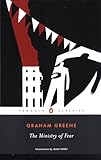 And yet my paranoid pedagogy was ultimately more comitragic than tragic, more Beckettian than Shakespearian. I came into the class like the emotionally, psychologically, and morally stunted characters we would encounter and came out in considerably better shape than most of them. I should focus on the upside of conspiracy fiction, the way it offers perverse, often painful opportunities for entertainment, growth, introspection, and enlightenment: to improvise or “canter” like Vladimir and Estragon wiling away the time, to lose one’s childish illusions like The Ministry of Fear’s Arthur Rowe, to ponder one’s guilt, if only futilely, like Joseph K., or like Oedipa Maas, to discover fleetingly the “high magic to low puns.” Such is the allure of conspiratorial narrative; it invites a clarity, however illusory, amidst the very real and supremely readable distortions of the paranoid style.
And yet my paranoid pedagogy was ultimately more comitragic than tragic, more Beckettian than Shakespearian. I came into the class like the emotionally, psychologically, and morally stunted characters we would encounter and came out in considerably better shape than most of them. I should focus on the upside of conspiracy fiction, the way it offers perverse, often painful opportunities for entertainment, growth, introspection, and enlightenment: to improvise or “canter” like Vladimir and Estragon wiling away the time, to lose one’s childish illusions like The Ministry of Fear’s Arthur Rowe, to ponder one’s guilt, if only futilely, like Joseph K., or like Oedipa Maas, to discover fleetingly the “high magic to low puns.” Such is the allure of conspiratorial narrative; it invites a clarity, however illusory, amidst the very real and supremely readable distortions of the paranoid style.
Image via Wikimedia Commons

